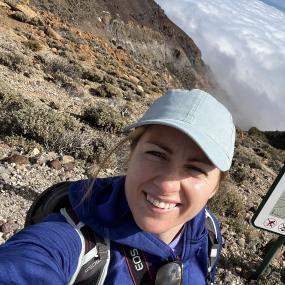Simulation in the Intensive Care Unit

Lina is an intensive care education fellow at Whipps Cross University Hospital, Barts Health. She completed training in intensive care and anaesthesia in Lithuania and finished a MSc in Medical education in Glasgow University. She has been working as an senior intensive care fellow in specialised centres in London since 2019 and has been as an intensive care education fellow for two years, developing simulation programmes with a focus on in situ simulation as a tool for both education and quality improvement.

Dave is a Consultant in Intensive Care Medicine and Anaesthesia at Whipps Cross University Hospital, Barts Health. He completed training in Intensive Care Medicine in London and Australia, before undertaking an Advanced Fellowship in Adult General, Neuro, and Cardiac ICM at Prince of Wales Hospital, Sydney, where he led on critical care simulation.
Along with his role as Sim Lead for the FICM Sub-committee on Education, he is TPD for Simulation for the London School of ICM.
Sim In The ICU
Why:
Medical education has changed massively in recent years in response to a wide variety of challenges (1). Initially established in aviation, simulation training, as an education tool in medicine, was first pioneered and developed in the field of anaesthesia (2). More than half a century later, the role of simulation in anaesthesia, emergency, and intensive care medicine has been well established (2).
What:
Simulation can be used across a myriad of settings, with many different learning aims, and intended outcomes in mind.
Technical skills training, often involving low-fidelity simulators, is an evidence-based tool, that is evidenced for teaching central line placement, chest drain insertion, and airway management (4–6). These sessions blur the lines in terms of what is simulation. Even though they teach specific skills, since simulators are used, they are still referred to as simulation. However, the term simulation is more frequently associated with the exploration of non-technical skills (2).
Simulation training can be delivered by means of a course for a specific group of people e.g., intensive care trainees in a specific year/course/grade receiving training on neurological emergency management using simulation (7). In this setting, the intended learning outcomes are very clear and can be easily mapped to the objectives of the training programme or curriculum.
Alternatively, simulation can involve multiple members from different teams, specialties, and disciplines. Multidisciplinary (MDT) simulation allows everyone to step out of their professional silos, and provides the opportunity to manage high risk clinical situations without any risk to the patient (8). MDT simulations allow teams to trial, identify, and address, issues with non-technical skills in a safe setting, with all members of the team approaching the situation from the perspective of their speciality or discipline, and exploring how the combination of personalities, experience, and expertise, combine in a common goal or end point. In these cases, while intended learning outcomes are planned, unexpected, but very beneficial lessons and experiences can be gained.
Where:
Simulation courses are often delivered in spaces specifically designated for simulation purposes. In most cases, these spaces have a simulation area that is filmed, and live streamed, to a room where participants can observe their colleagues without being present in the actual simulation space, removing the feeling of performative theatre. The simulation area can be easily readjusted depending on the need- differences, based on discipline, specialty, number of candidates etc. Simulation courses are “resource heavy,” with the candidate to faculty ratio, technology involved, and hire/allocation of the sim suite all contributing to large overheads.
An alternative approach to simulation is running in-situ simulations, in real clinical environments. In situ simulation is a technique that involves the MDT working through realistic clinical scenarios in their usual place of work, utilising simulation equipment (9). In situ simulation serves multiple purposes; it allows opportunity to uncover systemic latent errors (10,11), it serves as an MDT educational tool for both technical and non-technical skills (12), and it promotes behaviours that improve teamwork (13). Most importantly, even though it requires thorough planning, many safety considerations, and investment from all stakeholders, there is a growing body of evidence that proves that in situ simulation improves patient outcomes (9,14).
How:
Embedded simulation training into an education programme does require an initial significant cost and resource investment, but paramount is high quality debrief above all else (15). Before simulation is embarked upon, faculty who will execute scenarios, and facilitate debriefs, should be trained (16). If exposure to training in debriefing skills is limited, we would encourage trainers to reach out and attend/experience other centres.
Realistic scenarios need to be developed. They do not need to be complex, nor should they intentionally try to “trick” participants. The intention is never for candidates to fail, but to explore their behaviours in a safe environment. No one should ever embark upon simulation training wanting to “teach,” but to facilitate participants learning about their own skills and behaviours.
In situ simulation poses its unique challenges. It takes place in a clinical area, often with participants of differing background and experience. It is essential that leaders in all disciplines are invested, and a shared buy-in for why it is being done is necessary. All staff members need to understand that the aim of the simulation is not to look for faults, or to point out failures, but to work together towards having a better functioning system. Intensive care units tend to be dynamic spaces, so additionally, clear rules need to be established when attempts to run the simulation will be abandoned (such as critical staff shortage, extremely high clinical load/acuity, concerns regarding psychological safety of the staff etc (17)). A regular schedule for in situ simulation needs to be established so that it is anticpated, and the shared experiences are an integrated part of the local intensive care culture (18).
References:
- Herrera-Aliaga E, Estrada LD. Trends and Innovations of Simulation for Twenty First Century Medical Education. Vol. 10, Frontiers in Public Health. Frontiers Media S.A.; 2022.
- Seam N, Lee AJ, Vennero M, Emlet L. Simulation Training in the ICU. Vol. 156, Chest. Elsevier Inc; 2019. p. 1223–33.
- De Hert S. European simulation-based education and training in anaesthesiology and intensive care: still a long way to go? Eur J Anaesthesiol. 2022 Jun 1;39(6):487–8.
- Keller JM, Steinbach TC, Adamson R, Carlbom DJ, Johnson NJ, Clark J, et al. ICU Emergencies Simulation Curriculum for Critical Care Fellows: The Difficult Airway. 2018; Available from: https://doi.org/10.15766/mep_2374-8265.10744
- L’Her E, Geeraerts T, Desclefs JP, Benhamou D, Blanié A, Cerf C, et al. Simulation-based teaching in critical care, anaesthesia and emergency medicine. Anaesth Crit Care Pain Med. 2020 Apr 1;39(2):311–26.
- McSparron JI, Michaud GC, Gordan PL, Channick CL, Wahidi MM, Yarmus LB, et al. Simulation for skills-based education in pulmonary and critical care medicine. Ann Am Thorac Soc. 2015 Apr 1;12(4):579–86.
- Keller JM, Steinbach TC, Adamson R, Carlbom DJ, Johnson NJ, Clark J, et al. ICU Emergencies Simulation Curriculum for Critical Care Fellows: Neurologic Emergencies. 2019; Available from: https://doi.org/10.15766/mep_2374-
- Cates LA. Simulation training: A multidisciplinary approach. Advances in Neonatal Care. 2011 Apr;11(2):95–100.
- Fent G, Blythe J, Farooq O, Purva M. In situ simulation as a tool for patient safety: a systematic review identifying how it is used and its effectiveness. Vol. 1, BMJ Simulation and Technology Enhanced Learning. BMJ Publishing Group; 2015. p. 103–10.
- Rusiecki D, Walker M, Douglas SL, Hoffe S, Chaplin T. Multiprofessional perspectives on the identification of latent safety threats via in situ simulation: A prospective cohort pilot study. BMJ Simul Technol Enhanc Learn. 2021 Mar 1;7(2):102–7.
- Shah S, McGowan M, Petrosoniak A. Latent safety threat identification during in situ simulation debriefing: A qualitative analysis. BMJ Simul Technol Enhanc Learn. 2021 Jun 1;7(4):194–8.
- Martin A, Cross S, Attoe C. The use of in situ simulation in healthcare education: Current perspectives. Vol. 11, Advances in Medical Education and Practice. Dove Medical Press Ltd; 2020. p. 893–903.
- Patterson MD, Geis GL, Falcone RA, Lemaster T, Wears RL. In situ simulation: detection of safety threats and teamwork training in a high risk emergency department. Available from: http://dx.doi.org/10.1136/bmjqs-2012-000942
- Goldshtein D, Krensky C, Doshi S, Perelman VS. In situ simulation and its effects on patient outcomes: A systematic review. BMJ Simul Technol Enhanc Learn. 2020 Jan 1;6(1):3–9.
- Levett-Jones T, Lapkin S. A systematic review of the effectiveness of simulation debriefing in health professional education. Vol. 34, Nurse Education Today. Churchill Livingstone; 2014.
- Ross S. Twelve tips for effective simulation debriefing: A research-based approach. Med Teach. 2021;43(6):642–5.
- Bajaj K, Minors A, Walker K, Meguerdichian M, Patterson M. “No-Go Considerations” for in Situ Simulation Safety. Vol. 13, Simulation in Healthcare. Lippincott Williams and Wilkins; 2018. p. 221–4.
- Gómez-Pérez V, Escrivá Peiró D, Sancho-Cantus D, Casaña Mohedo J. In Situ Simulation: A Strategy to Restore Patient Safety in Intensive Care Units after the COVID-19 Pandemic? Systematic Review. Healthcare. 2023 Jan 14;11(2):263.
